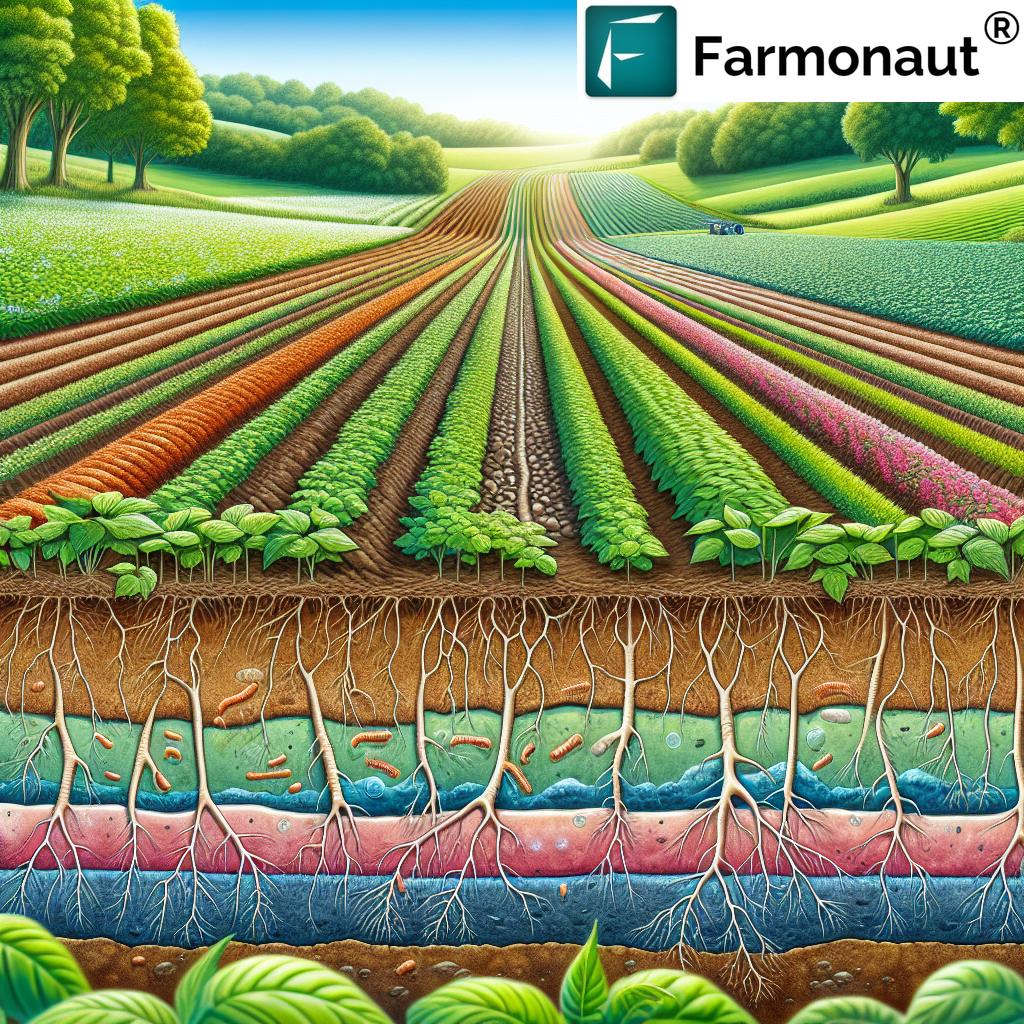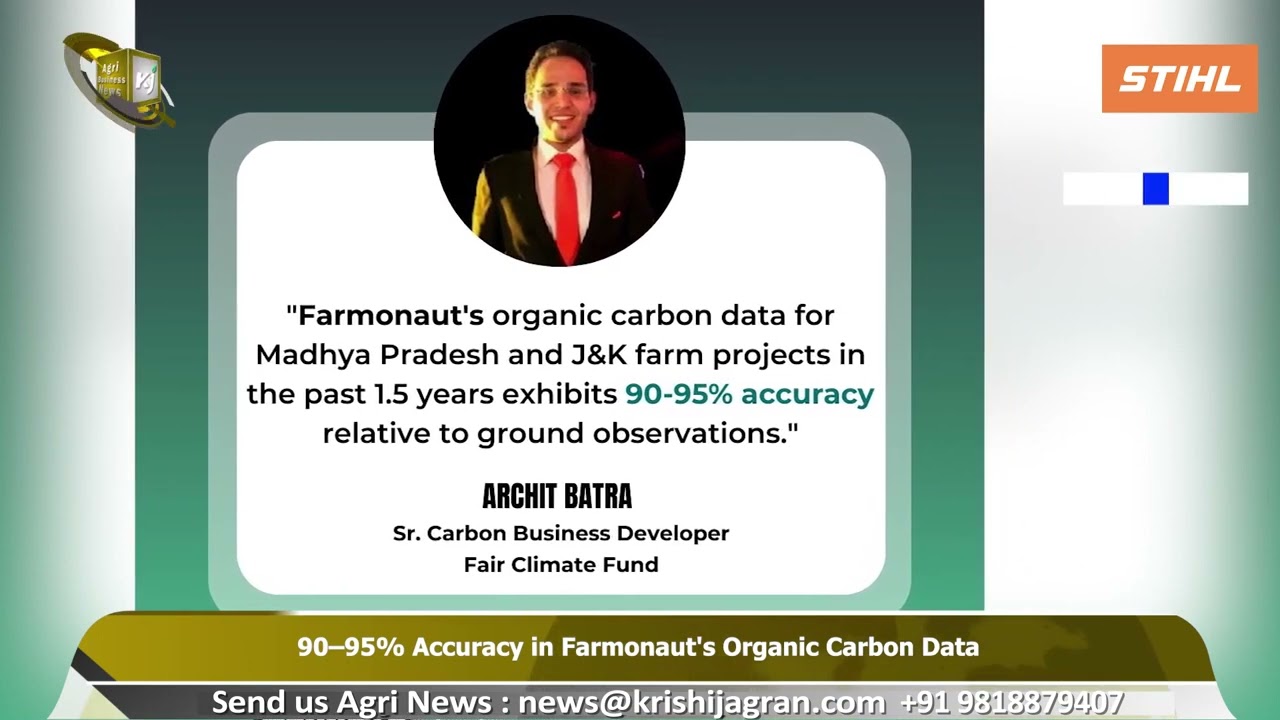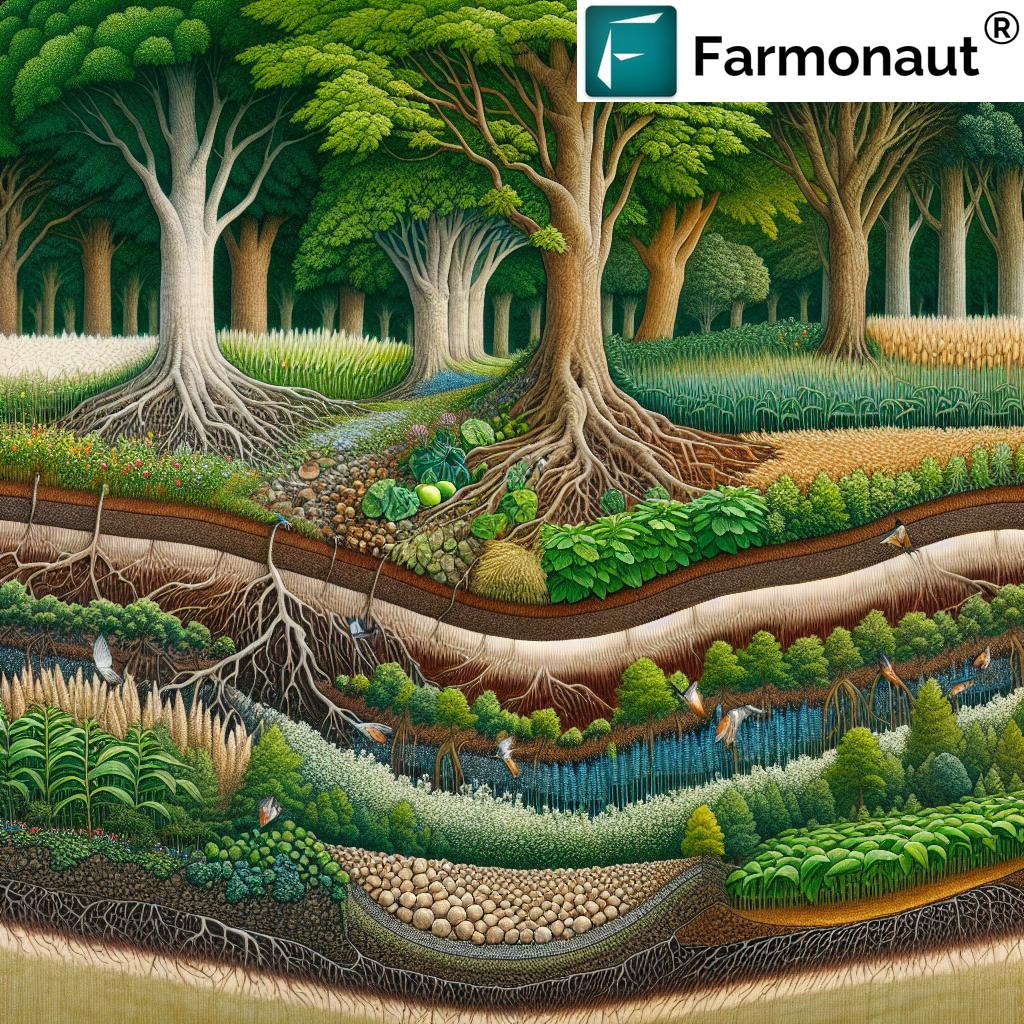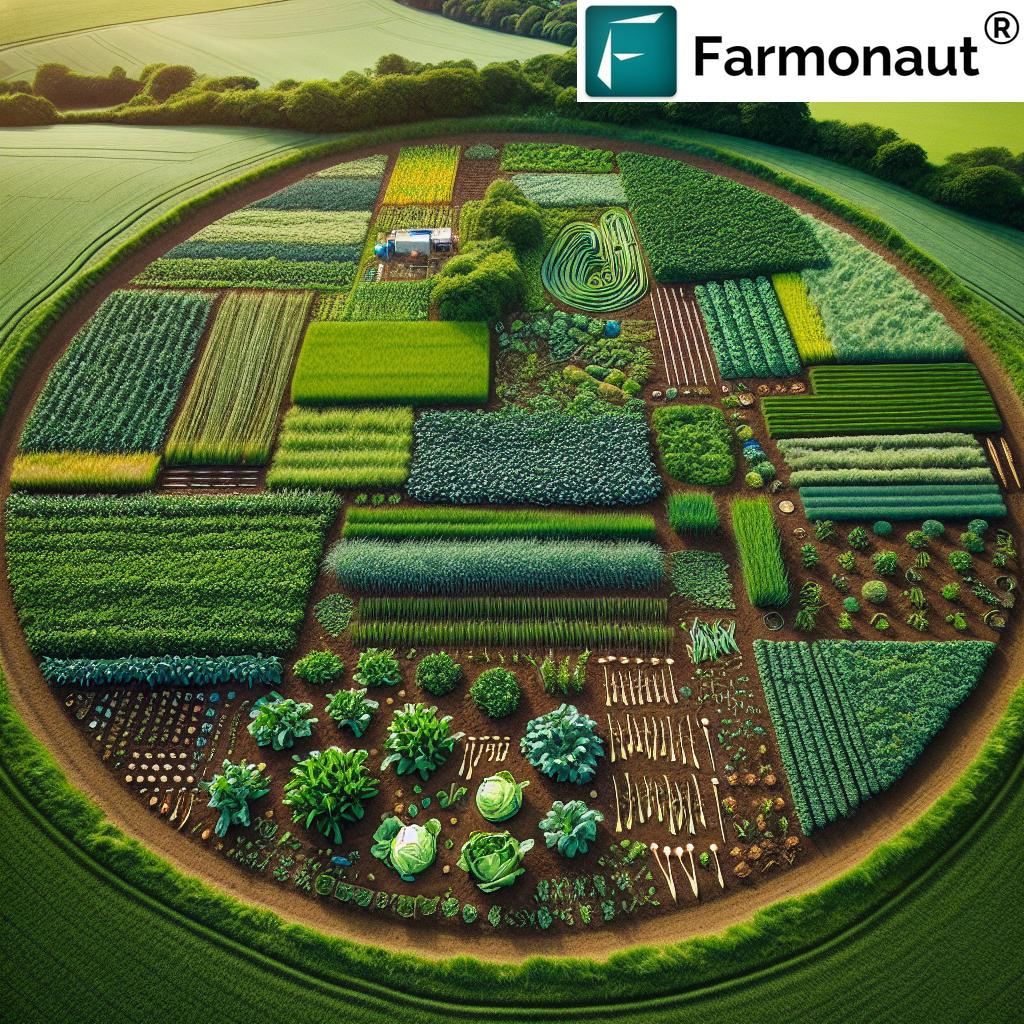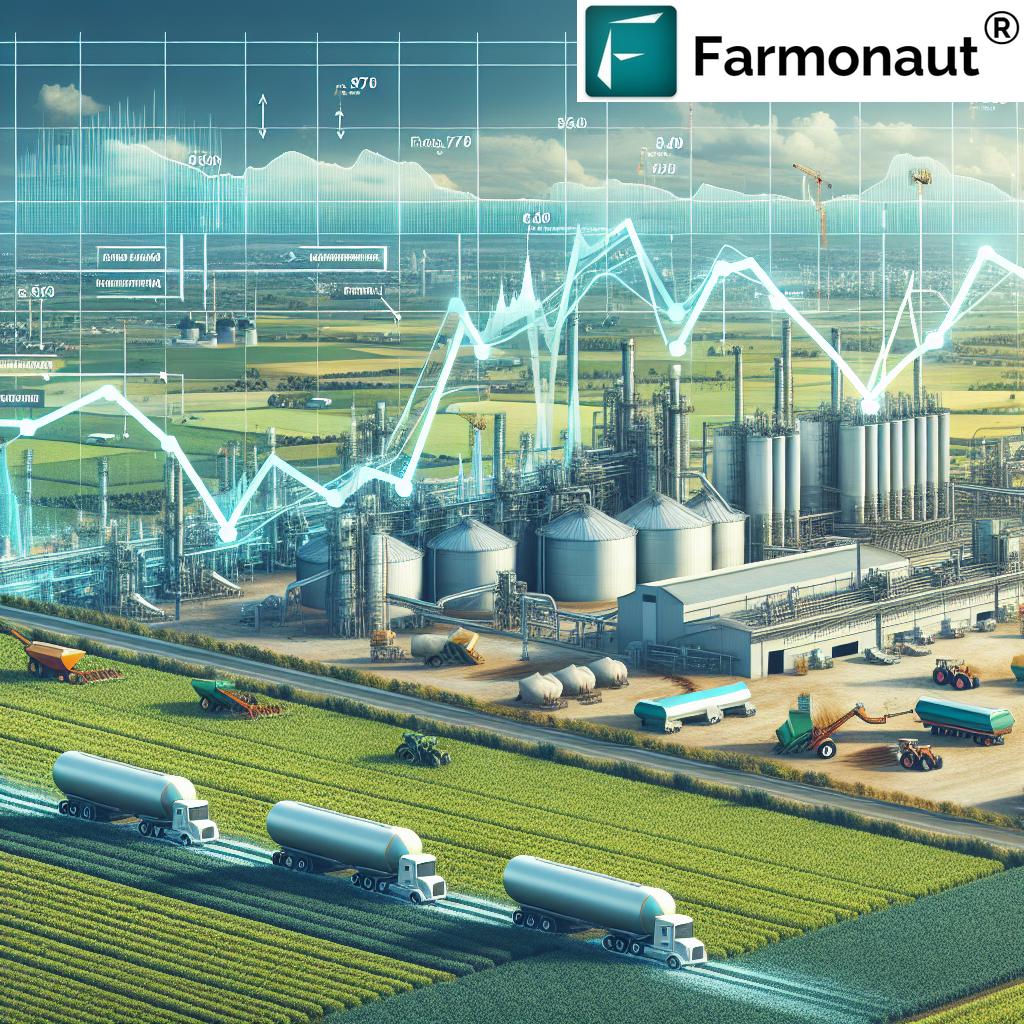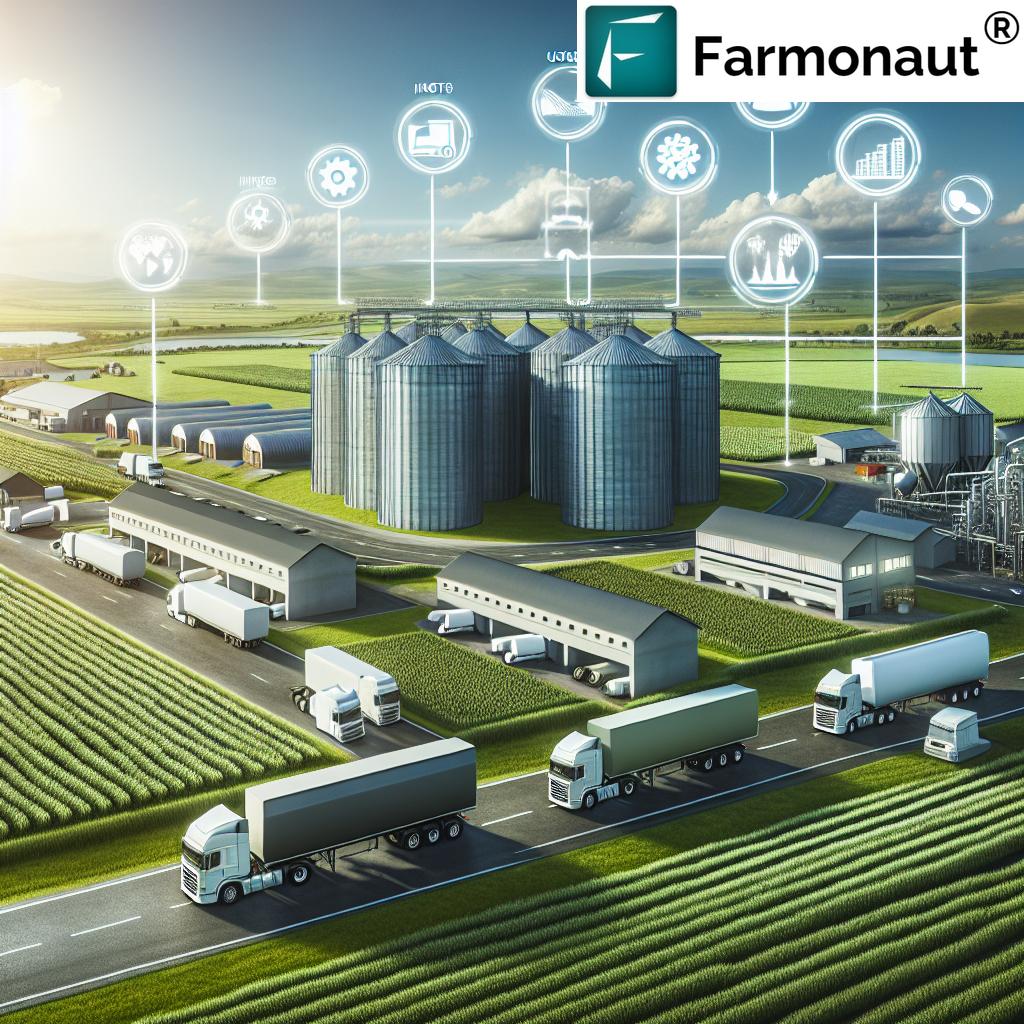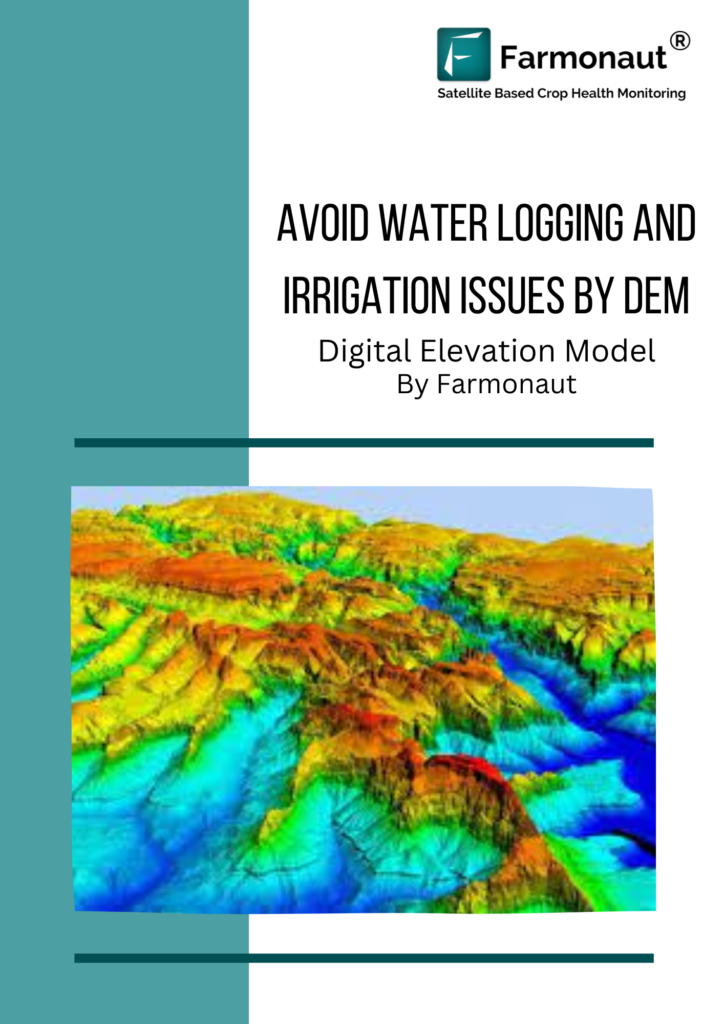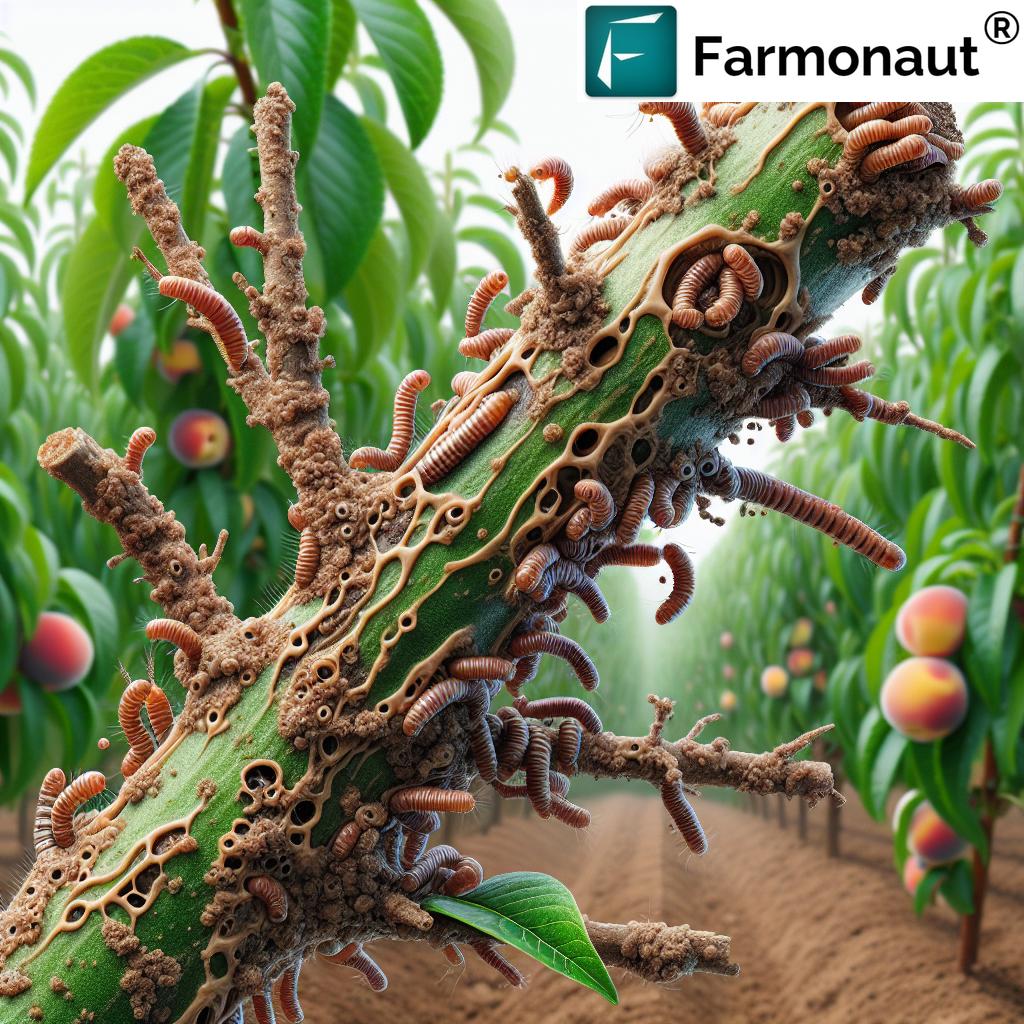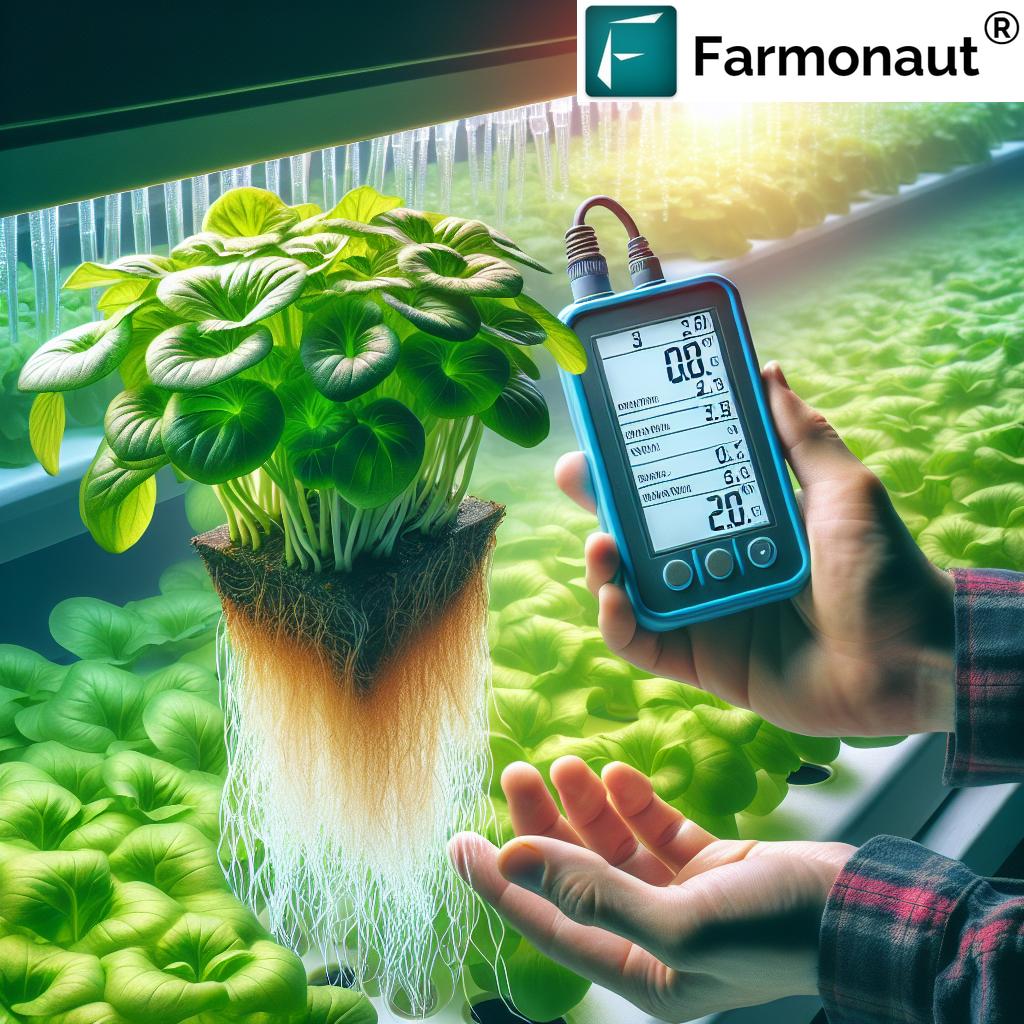Table of Contents
- What is Soil Health and Why Does It Matter?
- Principles of Soil Health Management
- 7 Powerful Ways to Improve Soil Health
- Agroforestry Benefits for Soil Health
- The Role of Conservation Agriculture
- Soil Health in Forestry Management
- Farmonaut Technology for Sustainable Soil Management
- Comparison Table of Sustainable Farming Practices and Their Impact on Soil Health
- FAQ: Soil Health Management for Sustainable Farming
- Conclusion
- Get Started with Farmonaut
Soil Health: 7 Powerful Ways to Improve Sustainable Farming
As we strive toward a sustainable future in agriculture, soil health stands out as the foundation for productive, eco-friendly, and resilient farm systems. Soil is more than just dirt—it’s a living ecosystem teeming with organisms, organic matter, nutrients, and roots that support plants, animals, and humans alike.
Understanding and improving soil health is the key to unlocking sustainable farming practices. This blog explores essential principles, practical management approaches, and innovative technologies like those offered by Farmonaut that help us to monitor, maintain, and enhance soil health worldwide.
Our focus keyword, “soil health,” is not only central to regenerative agriculture, but also serves as the gateway to improve crop productivity, conserve water, reduce input costs, and protect our crops and ecosystems for generations to come.
What is Soil Health and Why Does It Matter?
Soil health refers to the soil’s continued capacity to function as a vital living ecosystem, sustaining the growth of plants, animals, and humans. A healthy soil ecosystem provides:
- Clean air and water by filtering and buffering potential pollutants
- Productive crop fields, forests, and grazing lands
- Diverse wildlife habitats and beautiful landscapes
- Support for nutrient and carbon cycling
- Physical stability and support for roots and plant life
- Regulation of water infiltration and moisture retention
When we talk about sustainable agriculture, we focus on improving and maintaining soil fertility, maximizing organic matter in soil, safeguarding against soil erosion control, supporting biodiversity, and enhancing resilience against climate change.
Let’s explore how applying the principles of soil health can help us build resilient agro-ecosystems.
Principles of Soil Health Management
Leading research and real-world experience teach us some universal principles for soil health management:
- Minimize Soil Disturbance (especially tillage)
- Maximize Soil Cover (keep soil covered)
- Maximize Biodiversity (rotate crops and integrate diverse species)
- Maximize the Presence of Living Roots
By following these foundational guidelines, we enhance soil structure, promote moisture retention, boost nutrient cycling, and foster a robust community of soil organisms. Each principle directly supports sustainable farm management.
7 Powerful Ways to Improve Soil Health in Sustainable Farming
By thoughtfully applying these seven proven (and practical) methods, we can go beyond merely “maintaining” soil health, and truly improve soil fertility—even in challenging situations.
-
1. Minimize Soil Disturbance: No-Till and Reduced Tillage Practices
Excessive tillage destroys soil structure, disrupts organic matter decomposition, and harms beneficial soil organisms. Instead, we focus on no-till farming methods and reduced tillage to:
- Preserve soil aggregates and pore spaces for water infiltration
- Reduce erosion by stabilizing the soil surface
- Maintain organic matter and carbon content
- Limit greenhouse gas emissions compared with traditional plowing
No-till methods—where we plant directly into the previous season’s residues—are central to conservation agriculture and long-term soil health.
Explore how Farmonaut’s large-scale farm management tools can monitor soil moisture and optimize field activities for minimal disturbance. -
2. Maximize Soil Cover: Protect with Living Plants and Residues
Soil cover is a natural shield. Whether with living crops, cover crops, straw, or mulch, maintaining year-round cover:
- Prevents wind and water erosion
- Moderates soil temperature fluctuations
- Enhances moisture retention for roots and plants
- Supports beneficial organisms and reduces weed pressure
Cover crops like legumes and small grains can be planted during fallow periods to protect soil when main crops are absent.
Farmonaut’s satellite-based monitoring helps us evaluate cover crop effectiveness and track vegetative cover in near real time. -
3. Enhance Soil Biodiversity: Crop Rotations and Diversification
Diverse cropping systems promote a variety of organisms and natural pest suppression.
- Rotating crop species disrupts pest and disease cycles
- Legume rotations help fix atmospheric nitrogen into plant-available nutrients
- Different root structures build deeper, healthier soils over time
By planting more species, we encourage different microbial communities, improving nutrient cycling and organic matter breakdown.
Track and plan rotations for maximum biodiversity with Farmonaut’s adaptive crop planning features—learn more about API integration options. -
4. Keep Living Roots Year-Round
Active living roots are the soil’s lifeline. They feed soil organisms through root exudates and physically help build structure:
- Perennial plants and overwintering cover crops provide food and habitat for microbes all year
- Roots help create pores, improving water infiltration and reducing surface runoff
Continuous presence of living roots also means nutrient cycling keeps going, improving soil fertility steadily.
Want to optimize root health in your fields? Use Farmonaut’s crop and plantation advisory tool for crop-specific support. -
5. Use Cover Crops for Soil Health and Sustainable Farming
Cover crops are among the most versatile tools in sustainable agriculture:
- Scavenge unused nutrients and “hold” them in biomass
- Enhance organic matter in soil through decomposition of plant residues and leaf litter
- Suppress weeds and pests naturally
Rye, clover, vetch, and radish are excellent choices, each offering a specific function—nitrogen fixation, compaction busting, erosion control, or weed suppression.
Farmonaut’s AI-powered advisory recommends the right cover crops for your region and tracks biomass accumulation using multispectral satellite data. -
6. Add Organic Matter: Compost and Residue Management
Adding organic matter like compost, green manures, and residues is vital for:
- Improving soil structure and stability
- Enhancing moisture retention and infiltration
- Fueling beneficial organisms for improved decomposition and nutrient availability
- Increasing cation exchange capacity (CEC) for better nutrient retention
A steady input of organic materials keeps soil productive and alive.
Farmonaut helps assess organic matter trends and send timely alerts when organic content drops below healthy thresholds. -
7. Integrate Trees—Agroforestry for Soil Health
Agroforestry—the deliberate integration of trees, shrubs, and perennial species in agricultural fields—offers:
- Deep roots that access water and nutrients in deep soil layers
- Canopies that intercept rainfall, minimizing surface erosion
- Enhanced soil biodiversity and organic matter addition from ongoing leaf litter and root turnover
- Carbon sequestration for a climate-friendly ecosystem
We can control erosion, improve fertility, and support wildlife all at once.
With Farmonaut’s carbon footprinting feature, track the impact of tree-based systems on carbon sequestration and sustainability.
Agroforestry Benefits for Soil Health
By integrating trees and shrubs into agricultural systems, we unlock a cascade of ecological benefits. Here’s how agroforestry enhances soil health:
- Nutrient Cycling: Deep-rooted trees draw up nutrients from deep layers, recycling them via leaf litter for surface crops.
- Soil Erosion Control: Roots stabilize fields; canopies intercept rainfall, reducing runoff and erosion.
- Organic Matter Addition: Ongoing leaf and root turnover increases organic content, improving soil structure and fertility.
- Water Management: Tree cover reduces runoff and enhances moisture retention, benefiting both annual and perennial crops—perfect for drought-prone zones.
Farmonaut’s remote sensing technology can help us monitor agroforestry plots, tree vigor, and soil moisture patterns to refine our management approach and maximize both biodiversity and productivity.
- Blockchain-Based Product Traceability: Ensure transparency and credibility in your food supply chain. Track every step from farm to table and build trust with consumers.
- Farmonaut Carbon Footprinting: Measure, track, and reduce the carbon emissions of your farm or agroforestry project, helping move toward climate-smart agriculture.
- Satellite-Based Crop Loan & Insurance Verification: Secure crop financing or insurance with reliable remote verification—and reduce risk of fraud, ideal for farming cooperatives and financial service providers.
The Role of Conservation Agriculture in Soil Health
Conservation agriculture combines science-backed sustainable farming practices with real-world efficiency.
Key techniques and their soil health benefits:
- No-Till Farming Methods: Preserve natural soil structure, increase organic matter, and reduce runoff.
- Cover Crops: Prevent evaporation, supply nutrients, suppress weeds, and stabilize the surface.
- Crop Rotations: Break cycles of pests and diseases, support biodiversity, and maximize root diversity for better infiltration and resilience.
By combining these methods, we:
- Maintain high soil fertility for productive yields
- Protect the environment by reducing pollutants and improving water quality
- Support ongoing soil life—from microbes to earthworms
Explore the Farmonaut API to integrate conservation agriculture data into your platforms and research projects.
Soil Health in Forestry Management
Sustainable forestry is impossible without careful soil health management. We must:
- Retain tree residues, slash, and roots on-site after harvest for nutrients and habitat
- Protect sensitive soils by minimizing compaction and disturbance—choose the right equipment and harvest timing
- Encourage diverse undergrowth for habitat and soil life
Farmonaut’s crop and plantation advisory platform aids in monitoring forest soil health, mapping sensitive areas, and planning restoration or replanting for biodiversity and resilience.
Farmonaut Technology for Sustainable Soil Management
At Farmonaut, our mission is clear: make precision agriculture affordable and accessible for all.
Leveraging real-time satellite imagery, AI-powered advisory, blockchain traceability, resource management, and carbon footprint tracking, Farmonaut empowers us to:
- Monitor crop health and soil moisture with multispectral satellite images—improving water and fertilizer management
- Receive AI-based, personalized recommendations for soil fertility, disease, pest, and nutrient management
- Maintain supply chain transparency with blockchain-based traceability
- Calculate and reduce carbon footprints for climate-resilient farms
- Streamline large-scale and fleet operations with digital tracking and resource optimization
Farmonaut transforms soil health management from reactive guesswork to proactive, data-driven excellence.
Use our Fleet Management tools to support smart deployment of equipment and avoid field damage, especially after rainfall when soil is most vulnerable.
Comparison Table of Sustainable Farming Practices and Their Impact on Soil Health
This table compares the leading sustainable farming practices, linking specific actions to their estimated impact on soil fertility, biodiversity, cost, and environmental benefits. Use it to guide your management choices and soil health goals.
| Practice | Description | Impact on Soil Fertility (Est. % Improvement) | Biodiversity Support | Estimated Cost | Environmental Benefit |
|---|---|---|---|---|---|
| Crop Rotation | Planting different crops in a planned sequence | +10–20% | High | Low | Pest/disease suppression, diversity boost |
| Cover Cropping | Growing plants to cover soil between main crops | +15–30% | High | Medium | Erosion control, carbon sequestration |
| Reduced/No-Till | Minimizing or eliminating tillage/disturbance | +10–18% | Medium | Low | Topsoil preservation, moisture retention |
| Compost Application | Using decomposed organic matter as fertilizer | +12–25% | Medium | Medium | Soil structure, nutrient cycling |
| Agroforestry | Integrating trees/shrubs into fields | +20–50% | High | High | Biodiversity, erosion reduction, carbon sink |
| Intercropping | Growing two or more crops together | +8–15% | Medium | Low-Medium | Root diversity, resilience, pest control |
| Organic Fertilizers | Using manure, compost, biofertilizers | +10–22% | Medium | Medium | Reduces chemical runoff, enriches soil |
FAQ: Soil Health Management for Sustainable Farming
1. Why is soil health important for sustainable agriculture?
Soil health provides the foundation for productive crops, clean water, support for biodiversity, and climate resilience. Healthy soils cycle nutrients, filter pollutants, sustain plant and animal life, and ensure long-term ecosystem stability.
2. How can cover crops improve soil health?
Cover crops reduce erosion, fix atmospheric nitrogen, suppress weeds, and add organic matter to the soil. Their roots enhance microbial biodiversity, improve soil structure, and increase water retention capacity.
3. What are the best sustainable farming practices for restoring degraded soils?
The most effective practices are: adopting reduced or no-till methods, maintaining permanent soil cover, implementing diverse crop rotations, adding organic matter, using cover crops, and integrating agroforestry.
4. How does Farmonaut help with soil health management?
Farmonaut offers satellite-based crop and soil monitoring, AI-driven advisory, resource management, and blockchain traceability. This integrated system helps make informed decisions on irrigation, input application, cover cropping, residue management, and sustainable land use.
5. Can improved soil health help fight climate change?
Yes. Healthy soils sequester more carbon, reduce greenhouse gas emissions, and provide natural infrastructure for climate resilience—such as improved water infiltration during storms or sustained productivity during droughts.
6. What’s the difference between soil fertility and soil health?
Soil fertility is the soil’s ability to supply essential nutrients to plants. Soil health encompasses fertility, but also soil structure, water regulation, biodiversity, stability, and the overall ecosystem functions that support sustainable agriculture.
Conclusion: Investing in Soil Health for a Sustainable Future
Soil health is our legacy—critical to sustainable farming, ecological stability, and food security. By implementing the 7 powerful ways to improve soil health, farmers and land managers ensure the continued function and fertility of their land, support clean water, healthy crops, productive ecosystems, and thriving communities.
By using advanced tools like Farmonaut’s real-time monitoring, AI advisory, and resource management, we accelerate the transition to climate-smart, productive, and sustainable agriculture—for our farms, our food systems, and our planet.
Get Started with Farmonaut
- For Individual Farmers: Access accurate, real-time insights for better management of your soils and crops with the intuitive Farmonaut app (web, Android, iOS).
- For Agribusinesses: Unlock efficiency and sustainability at scale. Learn about large-scale farm management.
- For Researchers/Developers: Integrate Farmonaut’s powerful satellite and weather data into your platforms with our API Developer Documentation.
- For Financial Services: Reduce risk in crop loans and insurance through remote verification (learn more).


